This article was medically reviewed by Mark Ziats, MD, PhD. Dr. Mark Ziats is an Internal Medicine Physician, Scientist, Entrepreneur, and the Medical Director of xBiotech. With over five years of experience, he specializes in biotechnology, genomics, and medical devices. He earned a Doctor of Medicine degree from Baylor College of Medicine, a Ph.D. in Genetics from the University of Cambridge, and a BS in Biochemistry and Chemistry from Clemson University. He also completed the INNoVATE Program in Biotechnology Entrepreneurship at The Johns Hopkins University - Carey Business School. Dr. Ziats is board certified by the American Board of Internal Medicine.
There are 18 references cited in this article, which can be found at the bottom of the page.
This article has been viewed 151,103 times.
Coughs can be either a non-productive cough, which is dry, or a productive cough, which is wet. When you have a wet cough with phlegm, it generally means there is an infection or inflammation in your system. In order to help with your cough, you need to cough out your phlegm.[1] Though many at-home remedies lack hard scientific proof behind them, you may still find that they help to relieve your symptoms.
Steps
Using Home Remedies
-
1Follow doctor's treatments. When you have a cough, you may also be using pain medication, antifungal medications, antibiotics, or other doctor recommended treatments for infections. Always follow any instructions given to you by your doctor first.
- Follow these natural remedies for one to two weeks. If you don't get better or your symptoms worsen, see your doctor immediately.[2]
-
2Inhale humid air. Use a vaporizer or humidifier to help your cough. You can also take hot, steamy showers. This can help loosen mucus so it’s easier to cough up.Advertisement
-
3Drink warm fluids. Warm fluids are great when you have a lot of phlegm. They can help loosen congestion so you can cough it up. You can drink warm water, hot tea, juice, clear chicken or vegetable broths, or chicken soup.
- You can also put honey and lemon in the water and tea to add extra benefits. Honey and lemon booth help boost the immune system. Honey has antiseptic properties while lemon has antibacterial properties. Honey can also help get rid of mucus.[3]
-
4Use menthol rubs. Rubs like Vick’s VapoRub, Mentholatum, peppermint rubs, and other topical ointments that contain camphor and menthol can be helpful for coughs. Menthol is an expectorant and naturally breaks down mucus and helps you be able to cough up phlegm.[4]
- Just rub a small amount onto your chest and around your nose. The smell will loosen mucus.
-
5Seek immediate help. There are situations where you need to see your doctor immediately, especially if you have other conditions or are treating a child's cough. Seek immediate help from your doctor if you or your child:[5]
- Coughs up thick phlegm that is green, yellow, or red tented, which can signal infection
- Experiences wheezing or whistling when you cough or breath, which can mean your lungs are effected
- Has any indication of a strange sounding cough
- Has trouble breathing or shortness of breath after a cough
- Has whooping cough[6]
- Develops a fever over 100.4°F (38°C)
-
6Use a cough treatment. One way to cough up phlegm is to use a controlled coughing treatment. Sit somewhere comfortable. Cross your arms over your torso and put both your feet on the floor. Breathe in slowly through your nose. Lean forward while pressing your your stomach. Cough a few short, sharp coughs. After a few coughs, the phlegm should loosen so you can cough it out.[7]
- Try a huff cough treatment. Start seated. Lift your chin and breathe slowly using your diaphragm. Inhale, hold for a few seconds, then exhale sharply through your mouth. Repeat a few times, then breathe normally. When you feel phlegm in the back of your throat, cough it up. You will probably have to do this a few times to get rid of the phlegm.[8]
-
7Try chest cupping. A different cough treatment starts when you are lying down. Make sure your chest is angled at about 45 degrees. Cup your hand, then gently tap the left side of your chest, between the nipple and collarbone. Continue to tap with gentle, firm pressure, for about two minutes. Then do the same thing on the right side. Sit up, lean forward, and tap the same way on the left and right shoulder blades on the back. This might require a partner to help you.
- Lie on your back again, and tap the left and right front sides. Then, lie on one side with your arm over your head and tap the side. Repeat on the other side. Lie on your stomach and have a partner tap the back right above the ribs on the right and left side.
Using Herbal Remedies
-
1Use expectorant herbs. Expectorant herbs thin out mucus, which helps loosen congestion. Readily available herbs that function as expectorants include:
- Eucalyptus
- Elecampane (Inula)
- Slippery Elm
- Fennel seed
- Camphor
- Garlic
- Hyssop
- Lobelia
- Mullein
- Thyme
- Spearmint
- Ginger
- Cayenne pepper and black pepper
- Mustard seed
- Do not take Eucalyptus or peppermint oil by mouth.
- Some of these herbs, like Lobelia, can be toxic is you ingest too much. Talk to a doctor before using Lobelia.
- If you are pregnant, check with a physician before using any of these herbs. Some may cause side effects.
- Check with a physician before giving herbs to children. You also should check with a physician before ingesting herbs if you are taking medications.
- Some of these herbs may cause allergic reactions. Test out the herb by taking a small dosage before taking it.
-
2Make tea. Herbal teas are helpful with loosening phlegm. They also don’t contain caffeine, which can increase mucus production. Tea not only helps loosen congestion because it is a warm fluid, but you can also add expectorant herbs to increase the loosening of mucus in the chest. Chamomile and lemon teas are good for phlegm, and peppermint, spearmint, and ginger herbs are great for teas.
- Take one teaspoon of dried herb, or three teaspoons of fresh herb, and steep in one cup of boiled water. Let it steep for five to 10 minutes. Drink multiple cups a day.
- You can add some honey and lemon to taste. Cayenne pepper, garlic, mustard seed, black pepper, and onions tend to be the strongest and can be somewhat irritating, so drink these teas slowly.
- If you are giving these teas to a child, cut the amount of herb by ½ or increase to two cups of water.
-
3Inhale the herbs. Essential oils and expectorant herbs can be inhaled to help with cough. Inhaling them help loosen mucus.[9] You can crush and boil the herbs in a pot so you can inhale them, or place them in a diffuser. The easiest way may be to get the herbs in the form of essential oils. You can place the essential oils in a burner, place them in warm water, or place them in a diffuser.
- You can also inhale a cloth soaked in the herb. You can either soak it in the essential oils or in the water where you boiled the herb.
- Use this in moderation as inhaling too much of any substance can severely irritate the lungs.
Using a Steam Treatment
-
1Use the right herbs. In order to help you cough up phlegm, you need to treat your lungs. For steam treatments, you need to pick the right herbs to add as an oil, dried herb, or fresh herb. With steam treatments, the herbs and steam goes directly into your lungs, which allows it to act fast and be the most effective. It also helps expand your sinuses and nasal passages, which with thin mucus. Some herbs have antifungal and antibacterial in addition to expectorant properties. That means these help kill bacteria and other microorganisms. The different herbs you can use include:
-
2Add the herbs. Fill a pot with water. Bring it to a boil. Once it is at a roiling boil, add one to two drops of any essential oils listed above. You can also use one to two teaspoons of them as dried herbs. Stir the herbs into the water.
-
3Inhale the steam. Once you add the oil or the herbs, let the water boil for another minute. Turn off the stove and remove the pot from heat. Place it on a counter at a comfortable height for you. Once it cools down a minute or two, cover your head with a towel or cloth, close your eyes, and lean your head over the pot.
- Breathe the steam in through your nose for five seconds. Next, breathe out through your nose for five seconds. Repeat breathing in and out through your mouth for two counts each.
- Continue this for 10 minutes.
- During this step, stay 12 inches from the surface of the water. The steam will rise and being too close to the steam can burn your face.
-
4Repeat the treatment. Once you finish with the treatment, you need to repeat. You use this treatment every two hours while you are suffering from a bad cough. You should also try to blow your nose and cough as much as possible between these treatments.
- If you aren’t getting quite the help you need, try using a small pinch of black or cayenne pepper. Don’t add too much because it can cause irritation.
-
5Make yourself cough. Once you have undergone the steam treatment, try to make yourself cough if you aren’t already. This will help bring out the phlegm in your system. Once you cough, you should try not to swallow the phlegm again. Instead, spit it out into a napkin or tissue.
- You should do the same after any other remedy listed above.
References
- ↑ http://www.pdrhealth.com/diseases/cough/diagnosis
- ↑ http://www.mayoclinic.org/symptoms/cough/basics/when-to-see-doctor/sym-20050846
- ↑ http://www.mayoclinic.org/diseases-conditions/common-cold/in-depth/cold-remedies/art-20046403
- ↑ http://www.webmd.com/children/news/20101108/vapor-rub-helps-kids-cold-symptoms-sleep
- ↑ http://www.mayoclinic.org/symptoms/cough/basics/when-to-see-doctor/sym-20050846
- ↑ http://www.cdc.gov/pertussis/
- ↑ https://my.clevelandclinic.org/health/diseases_conditions/hic_Understanding_COPD/hic_Pulmonary_Rehabilitation_Is_it_for_You/hic_Controlled_Coughing
- ↑ https://www.ummchealth.com/health_care_services/lungs_and_breathing_(pulmonary)/adult/cystic_fibrosis/cystic_fibrosis_testing_and_care/huff_cough_technique/huff_cough_technique.aspx
- ↑ https://www.naha.org/explore-aromatherapy/about-aromatherapy/what-is-aromatherapy/
- ↑ https://www.botanical.com/botanical/mgmh/e/eucaly14.html
- ↑ http://www.uofmhealth.org/health-library/d04487a1
- ↑ http://www.uofmhealth.org/health-library/d04414a1
- ↑ https://www.botanical.com/botanical/mgmh/c/campho13.html
- ↑ http://www.uofmhealth.org/health-library/hn-2174009
- ↑ http://www.uofmhealth.org/health-library/hn-2114004
- ↑ http://www.uofmhealth.org/health-library/hn-2133009
- ↑ http://www.uofmhealth.org/health-library/hn-2125008
- ↑ http://www.uofmhealth.org/health-library/hn-1197005
About This Article
To cough up phlegm, try taking a hot shower or running a humidifier to help loosen the mucus. You can also drink something warm, like hot tea or chicken soup, to clear your congestion and soothe your throat. If that doesn’t help, sit in a chair with your arms crossed, then breathe in through your nose and lean forward over your arms to cough, which should loosen the phlegm in your chest. For tips from our Medical reviewer on how you can use herbs like ginger and eucalyptus to help you cough up phlegm, read on!





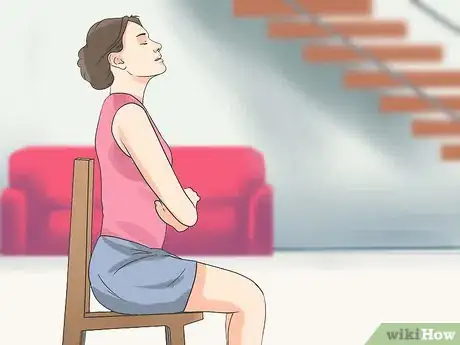


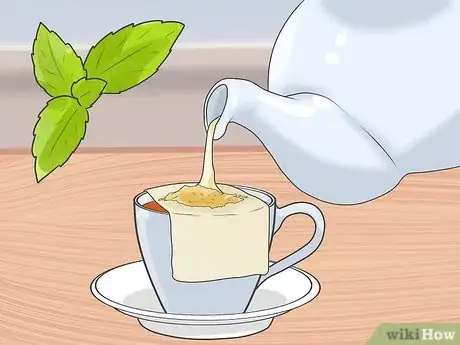


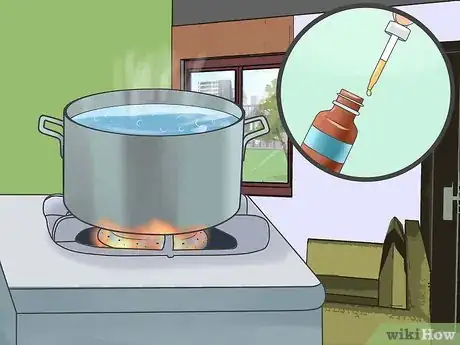

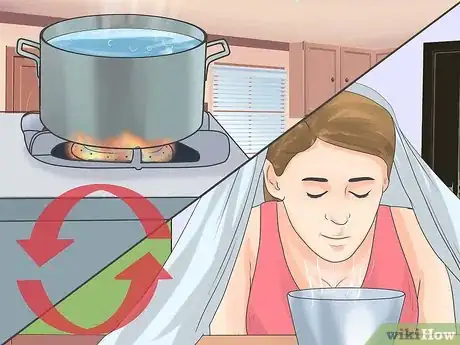
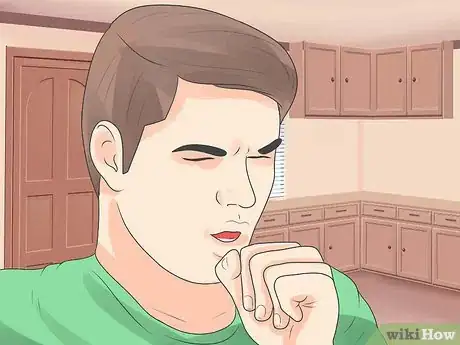


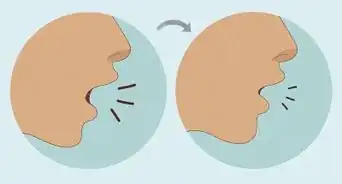
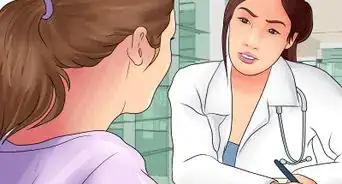


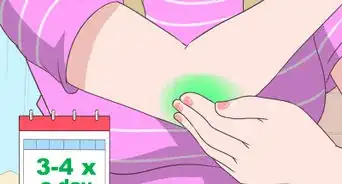

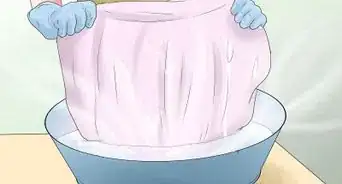
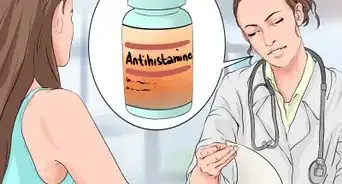

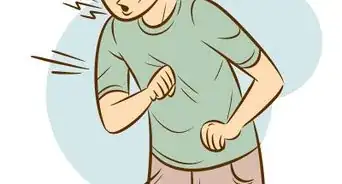












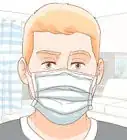





































Medical Disclaimer
The content of this article is not intended to be a substitute for professional medical advice, examination, diagnosis, or treatment. You should always contact your doctor or other qualified healthcare professional before starting, changing, or stopping any kind of health treatment.
Read More...